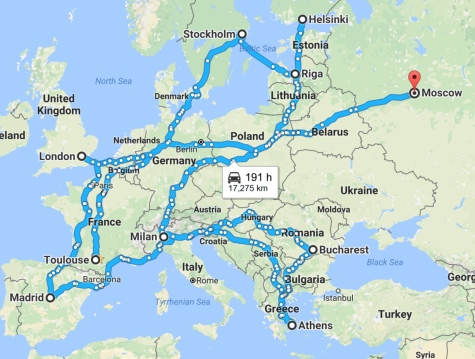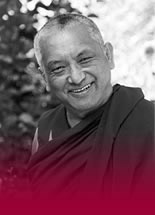Travel Blogs
12 January, 2017 | France
This past month I’ve been at Institut Vajra Yogini, in the countryside in the south of France, fifty kilometers east of Toulouse. But before France and after our pilgrimage, which ended November 16, I spent another week in Kathmandu and then flew to South Africa. There is no FPMT center there, but two little groups, in Cape Town and Durban, seem to have some connection. I also visited the beautiful Buddhist Retreat Centre in the bush, in Ixopo, a couple of hours southwest of Durban. I was at these places two years ago. This time I also visited Johannesburg, where there’s a branch of Geshe Damcho’s Lam Rim centers. I remember meeting Geshe-la in the UK in the late 1970s, where he has several centers, the first of which started in Wales. There seem to be very few Buddhist centers in South Africa. There are some Kagyu centers, but the only establish Gelug center is the Johannesburg group.
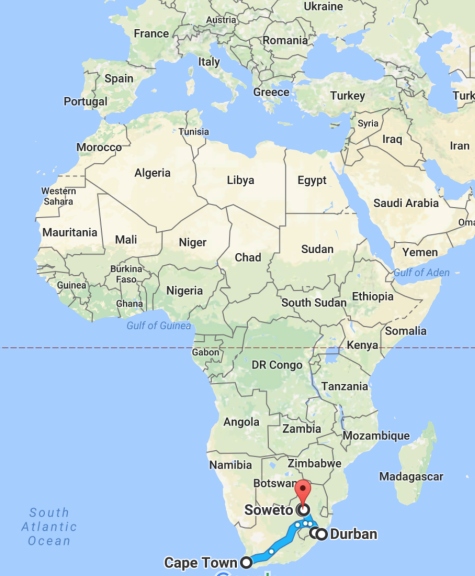
There’s an Office of Tibet (for the government in exile in Johannesburg and I met Nanga Choden-la, the representative for Africa. We went with her to Soweto for a peace talk. Quite an event! More like a concert! Lots of singing, including singing the praises of Nelson Mandela, and the national anthem in Zulu, English and other languages. The Catholic church where the talk was is famous, apparently, from apartheid days. There’s a Black Madonna there.
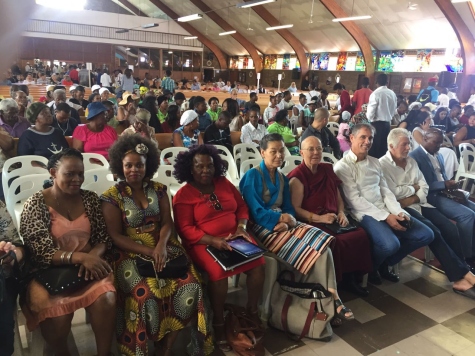
With Tibet’s representative for Africa, Nangsa Choden-la, at a talk in Soweto, near Johannesburg in South Africa.
An Australian who lives at Lam Rim Centre, Barry, took me around Johannesburg. I ate the best French Fries – called “chips,” of course, in the English style. And popcorn.
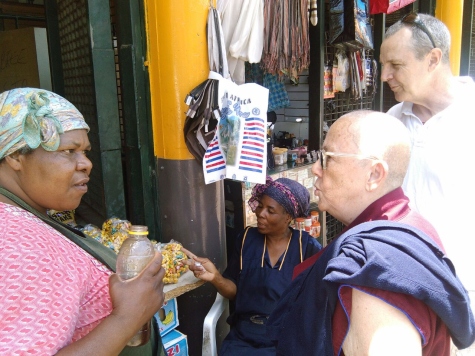
Buying popcorn in Johannesburg, and, below, the best French fries ever!
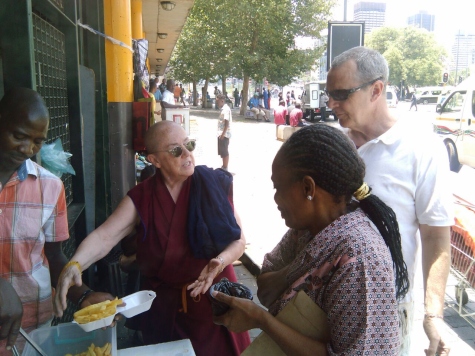
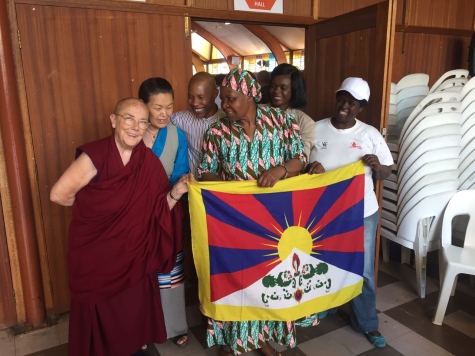
At the Soweto talk with Nangsa Choden-la, Tibet’s African representative. And, below, a local school choir singing the national anthem in Zulu.
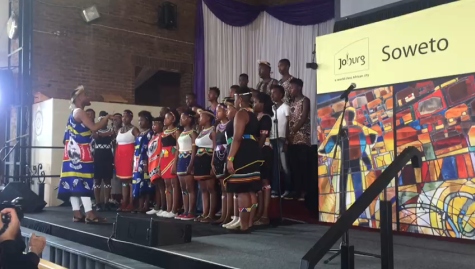
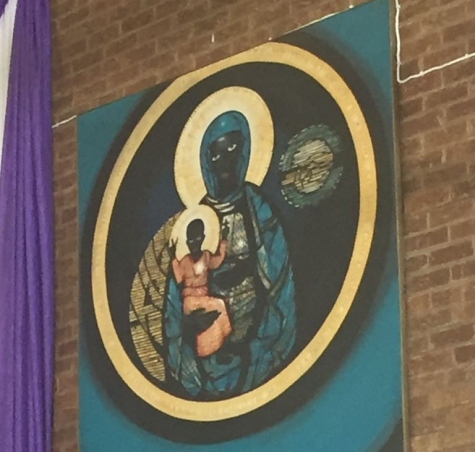
The Black Madonna at the Catholic church in Soweto. And below, with friends in Durban, including Sandy, on my left, who invited me there.
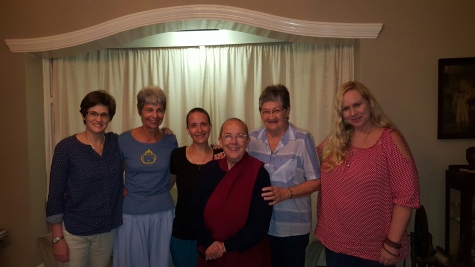
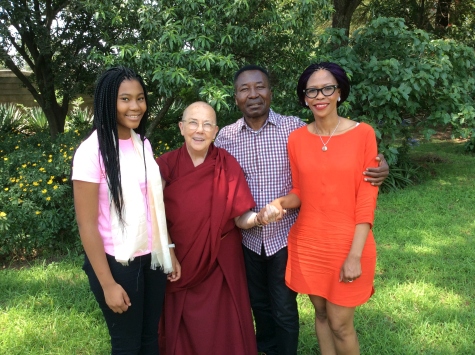
With Mimi, her daughter and friend, members of the Johannesburg Kagyu group.
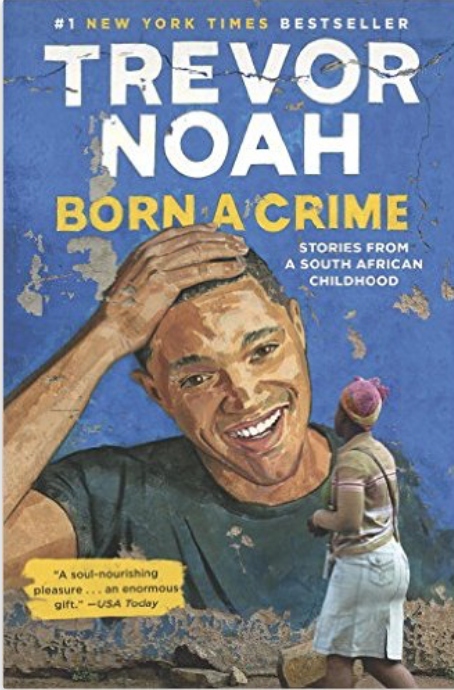
I’m a fan of Trevor Noah, the South African comedian who took over from Jon Stewart to run the Daily Show. I read his memoir recently: a lovely human being, in my opinion. The quality I admire most is his patience. And of course his empathy. His life was pretty intense, but it’s clear from his words that he was able to deal with it incredibly well. And in my opinion it’s because he doesn’t have anger. And he says that, effectively. Therefore he doesn’t blame, and therefore he doesn’t feel like a victim. And therefore, I bet, that’s why he’s a good comedian!
Anger and patience: they sound boring, almost simplistic if we think of psychological states. But the implications of not being angry are profound. The Buddhist view, of course, is that anger is the response when attachment doesn’t get what it wants. When I read that in Rinpoche’s teachings a while ago – almost a casual statement – it blew my mind. It brought attachment and anger totally together and opened the way to understand more clearly the Buddhist view about the mind and, specifically, the delusions, the neurotic mental states that are the cause of day-to-day suffering.
Modern psychology doesn’t talk about “attachment” and “anger”; we give more complicated names to them. Attachment is effectively the main cause of our day-to-suffering, according to Buddhism. Unless we understand how it functions – and it’s pretty primordial, multi-faceted too – as Lama Zopa Rinpche says, when we hear Buddha say that we need to give it up we will mistakenly think, “Oh, you mean I have to give up my happiness, my heart?” Not at all! On the contrary, when we’ve given up attachment, we will find our happiness and our heart! But it’s tricky. “Attachment” is such a simple word. But as Lama Yeshe says, “I can tell you about attachment for one who year, but you will never understand it until you go deep inside” – something like that.
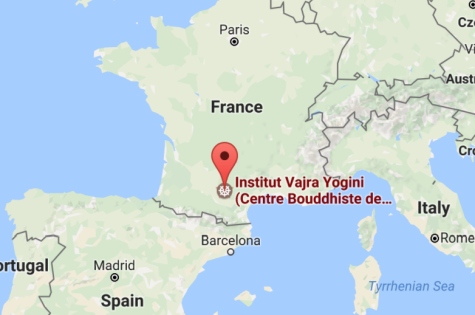
I’ve been in France for the past month.
After South Africa I flew back to Kathmandu for a couple of days. For the past seven years I’ve begun and ended my round-the-world air ticket in Amman in Jordan. Now I’ve changed it to Kathmandu, so much more convenient for me, since Qatar Airways is now part of the OneWorld group of airlines that I use. It includes Qantas, American Airlines, British Airways, Iberian, Royal Jordanian, and the Russian one, mysteriously called S7. These are the ones I almost always use. So I ended by 2016 ticket in Amman, then flew to Kathmandu via Doha in Qatar to start my 2017 ticket.
So now France, Institut Vajra Yogini. For several years now, I’ve been doing a week’s retreat here straight after Christmas. I always think of coming here as a bit of a holiday, so I add a couple of weeks to my schedule. Twenty minutes north of here is Nalanda Monastery: I always go there at least once for a lunch with the monks. They’re mostly on holidays right now.

Christmas lunch – and lights – with the volunteers and, at the top, retired resident lama, Geshe Tengye, and visiting lama, Yangsi Rinpoche on his right.
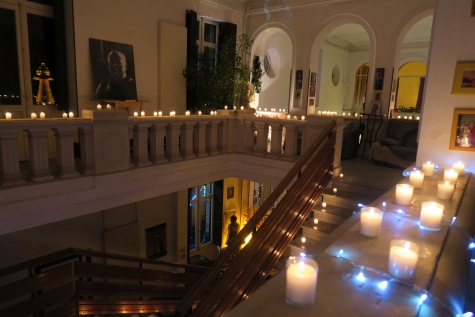
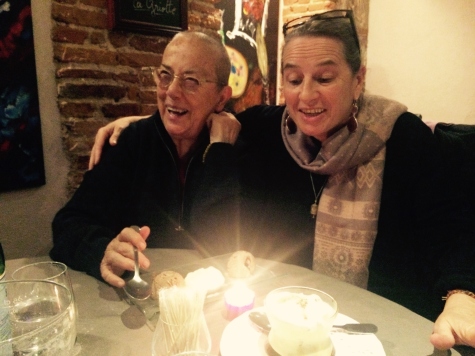
Celebrating my 72nd birthday and Violette’s fifty-something in Lavaur, the nearest town to Institut Vajra Yogini, with, below, Francois and Letitia.
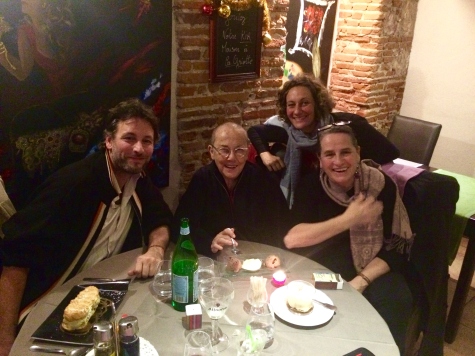
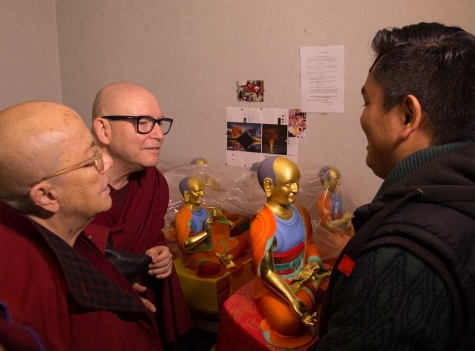
Above, admiring the details – even the hair! – of the painting of the Sixteen Arhats statues at Nalanda; the artist is Sonam-la, who was invited to come from Kathmandu.
Below, with Ven. Thekchok from Israel, Ven. Gendun from England, and Ven. Gendun from New Zealand, at Institut Vajra Yogini.

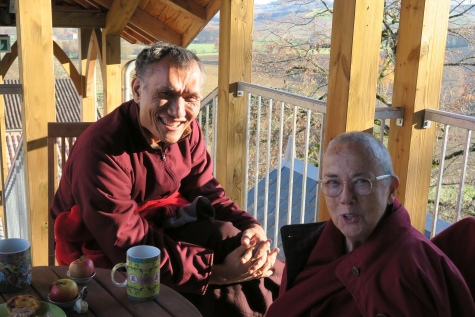
Afternoon tea with Yangsi Rinpoche from Maitripa College in Portland. Below, some of the retreat participants wrote postcards to some of my friends in prison. They love doing this – and the recipients love getting them!
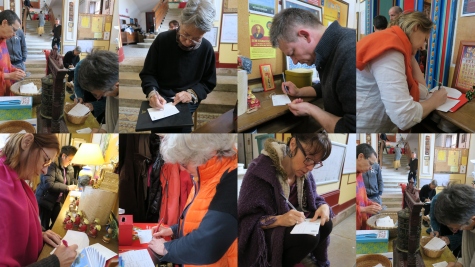
Peter Iseli, the Swiss painter, returned to Switzerland after at least four years here painting the forty-meter tangka of the Twenty-one Taras, commissioned for Tara Institute in Melbourne by Lama Zopa Rinpoche. Now statue makers Peter and Denise Griffin (and their two daughters) have moved in, taking over the big studio. They have lots of work lined up, Peter says. My old friend from London, Vicki Mackenzie, was here for the Christmas course. Her new book, a biography of the amazing Freda Bedi, will come out this year form Shambhala. She’s renowned in the Tibetan Buddhist world for having taken care of the young Tibetan tulkus soon after the Tibetans came to India.
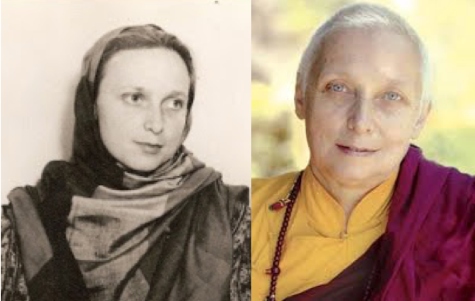
Above, English Freda Bedi, in her youth in India and as a nun in the 1960s.
Below, with London author Vicki Mackenzie, and artist Peter Griffin, who’s just moved into Institut Vajra Yogini.

She’d moved to India in 1930s and married an Indian. She was involved in the Indian independence movement and was a colleague of Gandhi and India’s first prime minister, Nehru. It was Nehru who gave her the responsibility of running the Social Welfare Board.
As a result of her meeting the Tibetans, she became devoted to the Sixteenth Karmapa and was ordained as a nun. One of the tulkus she supported was Lama Zopa Rinpoche. Vicki told me that she was invited to Kopan Monastery in the mid-1970s by Lama Yeshe, who sat her on the throne and then prostrated to her.
I was amazed and delighted to bump into Philippe Prunetta at the institute, who’s here doing retreat. I haven’t seen him since our amazing time together in 1982 when we and several other men and women were chosen by Lama Yeshe to act as security guards during six weeks of His Holiness’s visit in France, Italy, Spain.
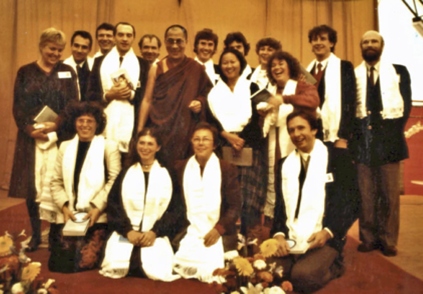
Above, bottom right, Philippe Prunetta and the rest of us with His Holiness in 1982; right, he took, Violette, me, Francois, and Francois’s brother from Paris, Philippe, left, to lunch in Lavaur.

------
Tomorrow, Friday January 13, I fly to Stockholm, via London. In Sweden for two weeks, the UK for two months, then other bits of Europe till mid-July. It’ll look something like this, at least as far as the countries are concerned, although a couple are missing; I maxed out on Google maps.
